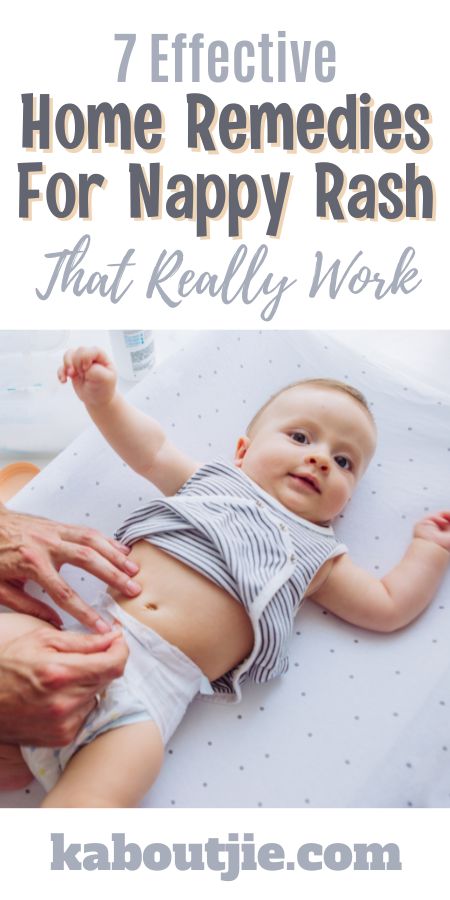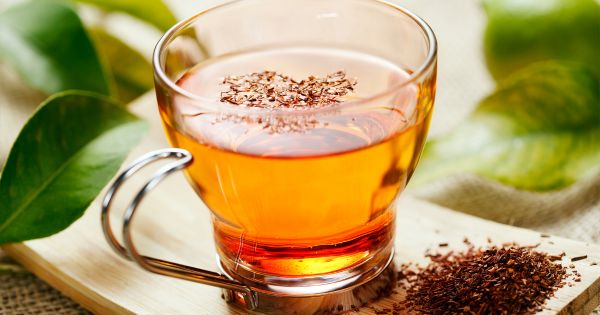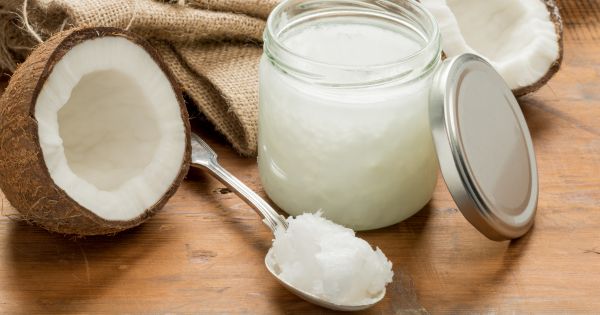Nappy rash is a common skin condition that affects babies and toddlers. It is caused by prolonged exposure to wetness, friction, and irritants such as urine and faeces. The rash appears as red, inflamed, and sometimes blistered skin in the diaper area.
While there are certain steps you can take to prevent nappy rash from occurring it’s a sure bet that at some stage your baby will get a nappy rash. Nappy rash can be treated with a variety of products specifically for nappy rash, however these home remedies for nappy rash are much cheaper and might just be in your home anyway.
***Disclosure -The links in this post may contain affiliate links and I may receive a small commission if you make a purchase after clicking on a link.***

Maizena
What Is Maizena?
Maizena is a brand of cornstarch that is commonly used in cooking and baking. It is a fine, white powder that is made from the endosperm of corn kernels.
How Can Maizena Help With Nappy Rash?
Maizena can be used as a natural remedy for nappy rash. It helps to soothe and protect the skin by creating a barrier between the skin and the wet nappy. It also helps to absorb moisture and reduce friction, which can further irritate the skin.
How To Use Maizena For Nappy Rash
Before applying maizena, clean the nappy rash area with warm water and mild soap. Pat the area dry with a soft towel. Sprinkle a small amount of maizena onto the affected area. Make sure to cover the entire rash with a thin layer of maizena.
Use your fingers to gently rub the maizena into the skin. This will help to soothe the rash and reduce inflammation. You can apply maizena as often as needed throughout the day. It is safe to use on a daily basis and can be used in combination with other nappy rash treatments.
Maizena can also be used as a preventative measure to avoid nappy rash. Simply sprinkle a small amount onto your baby’s bottom before putting on a clean nappy.
Maizena is made from cornstarch, so if your baby has a corn allergy, it is best to avoid using maizena as a nappy rash treatment.
Benefits Of Using Maizena For Nappy Rash
Using Maizena for nappy rash has several benefits. It is a natural and gentle remedy that is safe for babies’ delicate skin. It is also affordable and readily available at most grocery stores. Additionally, Maizena can help to prevent further irritation and discomfort caused by nappy rash.
Precautions When Using Maizena For Nappy Rash
While Maizena is generally safe to use for nappy rash, there are a few precautions to keep in mind. Avoid using too much powder, as this can cause clumping and make it difficult to clean the skin. Also, be sure to check for any signs of allergic reactions, such as redness or swelling, and discontinue use if necessary. Finally, if the nappy rash persists or worsens, consult a healthcare professional for further advice and treatment

Rooibos Tea
Rooibos tea is a herbal tea made from the leaves of the rooibos plant, which is native to South Africa. It is caffeine-free and has a sweet, nutty flavor. Rooibos tea is rich in antioxidants and has been shown to have anti-inflammatory properties.
How Can Rooibos Tea Help With Nappy Rash?
Rooibos tea can be used topically to soothe and heal nappy rash. The anti-inflammatory properties of rooibos tea can help reduce redness and inflammation, while the antioxidants can help protect the skin from further damage. Rooibos tea can also help moisturize the skin and promote healing.
How To Use Rooibos Tea For Nappy Rash?
Start by brewing a strong cup of rooibos tea using boiling water. Allow the tea to steep for at least 10 minutes to ensure that the tea is strong enough to be effective. Once the tea has brewed, let it cool down to room temperature. It is important to make sure that the tea is not too hot before applying it to your baby’s skin.
Soak a clean cloth or cotton wool in the cooled down rooibos tea. Make sure that the cloth is completely saturated with the tea. Gently apply the cloth to the affected area of your baby’s skin. Make sure that the tea is in contact with the skin and that the cloth covers the entire area.
Leave the cloth on the affected area for a few minutes to allow the rooibos tea to work its magic. The tea will help to soothe the skin and reduce inflammation. You can repeat this process as needed throughout the day to help soothe your baby’s nappy rash. Rooibos tea is gentle and safe to use, so you can use it as often as necessary.
You can also add cooled rooibos tea to your baby’s bath water.
Aloe Vera
Aloe vera is a plant that has been used for centuries for its medicinal properties. It is known for its soothing and healing properties, making it one of the best natural remedies for nappy rash.
How Can Aloe Vera Help With Nappy Rash?
Aloe vera has anti-inflammatory properties that can help to reduce the inflammation and soothe the skin, it is gentle on the skin and can help to soothe the discomfort associated with nappy rash.
Dry skin can exacerbate nappy rash and aloe vera is a natural moisturizer that can help to hydrate the skin and prevent further irritation. Nappy rash can sometimes become infected. Aloe vera has antibacterial properties that can help to prevent infection and promote healing.
Aloe vera is a safe and natural alternative to conventional treatments. Many conventional treatments for nappy rash contain harsh chemicals that can be harmful to babies. Aloe vera is a safe and natural alternative that can be used without the risk of side effects.
How To Use Aloe Vera For Nappy Rash
When selecting an aloe vera gel for nappy rash, it is important to choose a pure and natural product. Look for a gel that is free from added fragrances, colors, and preservatives.
Before applying the aloe vera gel, it is important to cleanse the affected area with warm water and a mild soap. Gently pat the area dry with a soft towel. Using a clean finger or cotton swab, apply a thin layer of aloe vera gel to the affected area. Be sure to cover the entire area and avoid rubbing the skin too hard.
Allow the aloe vera gel to absorb into the skin for a few minutes before putting on a fresh nappy. This will give the skin time to absorb the healing properties of the gel. For best results, apply the aloe vera gel to the affected area at least twice a day. If the rash persists or worsens, consult a healthcare professional.

Coconut Oil
Coconut oil is a natural remedy for nappy rash that has been used for centuries. It is a safe and effective alternative to chemical-based creams and ointments that can be harsh on a baby’s delicate skin.
How Does Coconut Oil Help With Nappy Rash?
Coconut oil has anti-inflammatory properties that can help reduce redness and swelling associated with nappy rash. It also has antibacterial and antifungal properties that can help prevent infection. Coconut oil is a great moisturizer for dry and irritated skin. It can help soothe and hydrate the skin, reducing the discomfort associated with nappy rash.
Coconut oil is easy to apply and can be used as a barrier cream to protect the skin from further irritation. It can be applied directly to the affected area or mixed with other natural ingredients like aloe vera or lavender oil for added benefits.
Coconut oil is safe for babies and can be used on a daily basis to prevent nappy rash. It is also gentle enough to use on other areas of the body that may be prone to dryness or irritation.
Coconut oil is an affordable alternative to expensive nappy rash creams and ointments. A little goes a long way, making it a cost-effective solution for parents.
How To Use Coconut Oil For Nappy Rash
Before applying coconut oil, make sure to clean the affected area with warm water and a mild soap. Gently pat dry with a soft towel. Take a small amount of coconut oil and apply it to the affected area. Make sure to cover the entire area with a thin layer of oil.
Gently massage the coconut oil into the skin. This will help to soothe the rash and promote healing. Apply coconut oil to the affected area as often as needed throughout the day. This will help to keep the skin moisturized and prevent further irritation.
Chamomile Tea
Chamomile tea has anti-inflammatory properties that can help soothe and calm irritated skin. This makes it an excellent natural remedy for nappy rash.
How Does Chamomile Tea Help Nappy Rash?
Chamomile tea’s anti-inflammatory properties soothe irritated skin caused by nappy rash. The tea contains compounds that can reduce redness, swelling, and itching, providing relief to your baby’s delicate skin. It also has antibacterial properties that can help prevent infection in the affected area. This is especially important for nappy rash, as the warm and moist environment can be a breeding ground for bacteria.
Chamomile tea can help moisturize your baby’s skin, which is essential for healing nappy rash. The tea contains natural oils that can help lock in moisture, preventing further irritation and promoting healing.
It is a natural and safe remedy for nappy rash as it does not contain any harsh chemicals or synthetic ingredients that can irritate your baby’s skin. It is also gentle enough to use on newborns and infants.
How To Use Chamomile Tea For Nappy Rash
Start by brewing a cup of chamomile tea using a tea bag or loose chamomile flowers. Let it steep for 5-10 minutes to ensure the tea is strong enough to be effective. Once the tea has brewed, let it cool down to room temperature. You don’t want to apply hot tea to your baby’s sensitive skin.
Soak a soft cloth or cotton ball in the chamomile tea. Make sure the cloth is not too hot and gently wring out any excess liquid. Gently apply the chamomile tea-soaked cloth to the affected area. You can also use a spray bottle to apply the tea if you prefer. You can repeat this process several times a day as needed until the nappy rash clears up. Chamomile tea is gentle and safe to use on your baby’s delicate skin.
You can also add chamomile tea to your baby’s bath water to help soothe and calm their skin. Simply brew a strong cup of chamomile tea and add it to the bathwater.

Breast Milk
Breast milk contains natural antibodies and anti-inflammatory properties that can help soothe and heal nappy rash. It is readily available and free, with many uses, makng it a cost-effective solution for treating nappy rash. Breast milk is gentle on a baby’s delicate skin and does not contain any harsh chemicals or fragrances that can irritate the skin further.
How Breast Milk Helps Nappy Rash
Breast milk contains antibodies that help fight off bacteria that can cause nappy rash. These antibodies can help prevent the rash from getting worse and can even help clear it up faster. Breast milk is also soothing and moisturizing for the skin. It can help reduce inflammation and irritation, which can be especially helpful for babies with sensitive skin.
Breast milk contains natural healing properties that can help speed up the healing process of nappy rash. It can help repair damaged skin and promote healthy skin growth. Breast milk is always on hand and readily available, making it a convenient solution for treating nappy rash. It can be used at home or on-the-go, making it a versatile option for busy parents.
How To Use Breast Milk For Nappy Rash
Before applying breast milk to the nappy rash, make sure to clean the area thoroughly with warm water and a mild soap. Pat the area dry with a soft towel. Express a small amount of breast milk into a clean container. You can use a breast pump or hand express the milk.
Using a cotton ball or your clean fingers, apply a small amount of breast milk to the affected area. Gently massage the milk into the skin. Allow the breast milk to air dry on the skin. Do not wipe it off or rinse it away. You can apply breast milk to the nappy rash as often as needed, especially after each nappy change.
Bicarbonate Of Soda
Bicarbonate of soda, also known as baking soda, is a white crystalline powder that is commonly used in baking and cooking. It is a natural antacid and can also be used for cleaning and deodorizing.
How Does Bicarbonate Of Soda Help With Nappy Rash?
Bicarbonate of soda has natural antibacterial and anti-inflammatory properties that can help soothe and heal nappy rash. It can also help neutralize the pH of the skin, which can be helpful in preventing further irritation.
How To Use Bicarbonate Of Soda For Nappy Rash
To use bicarbonate of soda for nappy rash, mix a small amount of the powder with water to create a paste. Apply the paste to the affected area and leave it on for a few minutes before rinsing off with warm water. You can also add a small amount of bicarbonate of soda to your baby’s bath water to help soothe and heal the skin.
Precautions When Using Bicarbonate Of Soda For Nappy Rash
While bicarbonate of soda is generally safe to use for nappy rash, it is important to avoid getting the powder in your baby’s eyes or mouth. It is also important to avoid using too much bicarbonate of soda, as it can be drying to the skin.
 Kaboutjie SA Mommy Blogs by Lynne Huysamen
Kaboutjie SA Mommy Blogs by Lynne Huysamen





I used olive oil with both my sons and it worked miraculously . My sister in law used oatmeal In a nylon stocking, leave the stocking in the bath while your baby is still in water.
Thanks Nadia, never heard those home remedies! Thank you for sharing 🙂
Haven’t tried but heard that vinegar also works.
Thank you Lynne and Nadia.
Will remember this for the future.
Oooo see now that you posted this. I forgot.
Her bums are just a little red. Will try the Maizena and nappy off for as long as possible!
Rooibos teabag – tried & tested.
Worked!
Yes, I’ve also tried that Marisca and now if my kids have an irritation I put Rooibos tea in their bath. Works like a bomb 🙂
Good idea to put it in bath water.
Tx Lynne
I use maizena on a regular basis and each month I mix my maizena and my Vaseline together and I use it on a regular basis with every nappy changed and his bottom is beautiful I never have problems
Hi pretorius how much vasiline and maizena do i mix may i ask
Noleen when I tried it I did a tablespoon of each. It made a nice thick paste 🙂
luck is on my side havent had one rash with my boy and this is always good to know incase
First time am hearing about those remedies thanks I will consider it when needed